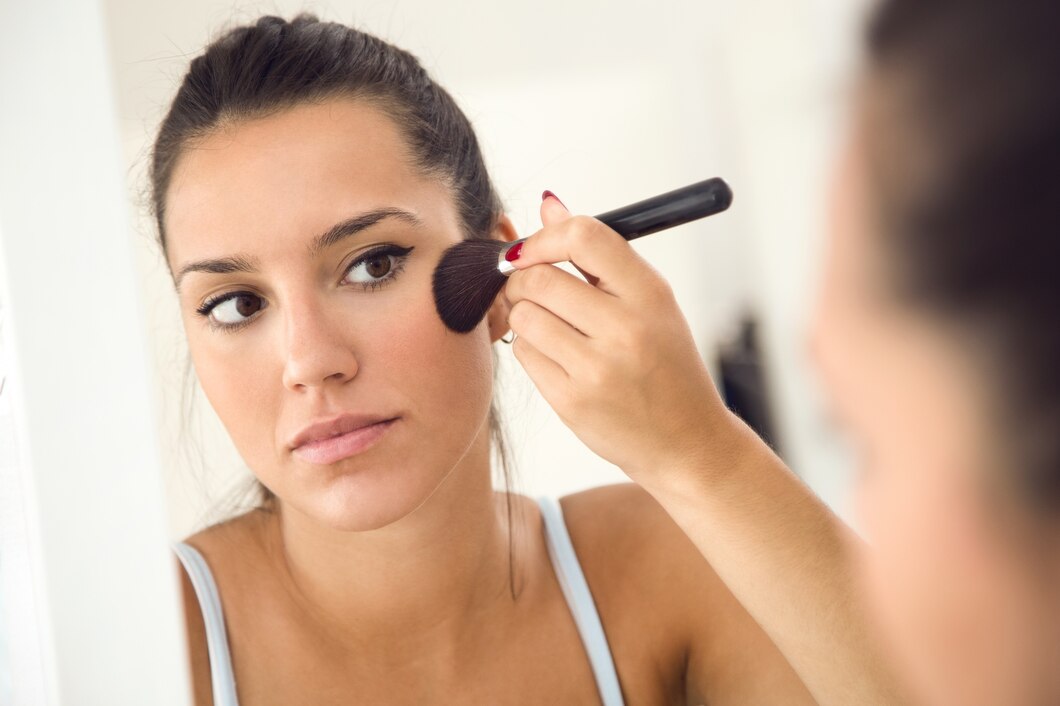For individuals with acne-prone skin, makeup can be both a friend and a foe. While it offers a means to conceal blemishes and boost confidence, improper use can aggravate acne and impede skin health. Here’s a comprehensive guide to using makeup that not only helps in concealing blemishes but also supports the journey to achieving clear skin.
1. Choose Non-Comedogenic Products
The first rule for acne-prone skin is to use non-comedogenic makeup products. These are specially formulated to avoid clogging pores, reducing the risk of breakouts. Look for labels that say “non-comedogenic,” “oil-free,” or “won’t clog pores.”
2. Prep Your Skin
Preparation is key to achieving a smooth, flawless finish:
- Cleanse: Start with a gentle cleanser to remove excess oil and impurities.
- Moisturize: Hydrate your skin with a lightweight, oil-free moisturizer. Even acne-prone skin needs moisture to prevent the overproduction of sebum.
- Prime: Use a mattifying primer to create a smooth base and control oil throughout the day. A primer can also help makeup adhere better and last longer.
3. Foundation Selection
When choosing a foundation:
- Opt for Mineral Makeup: Mineral foundations are often free of irritating chemicals and can provide good coverage without clogging pores.
- Test Before You Buy: Patch-test any new product on your jawline to ensure it doesn’t trigger a reaction.
- Go Lightweight: Heavy, thick foundations can exacerbate acne. Instead, opt for a buildable, lightweight formula that allows your skin to breathe.
4. Concealing Blemishes
To effectively conceal blemishes:
- Color Correct: Use a green color corrector to neutralize redness from acne. Apply it sparingly to affected areas.
- Spot Conceal: Choose a high-coverage, non-comedogenic concealer. Dab it onto blemishes with a clean brush or fingertip and blend the edges gently.
5. Application Techniques
Proper application techniques can make a significant difference:
- Clean Tools: Always use clean brushes, sponges, or fingertips to apply makeup. Dirty tools can harbor bacteria and worsen acne.
- Pat, Don’t Rub: Apply products by patting them into the skin rather than rubbing. This technique ensures better coverage and minimizes irritation.
6. Setting Your Makeup
To set your makeup:
- Translucent Powder: Use a non-comedogenic translucent powder to set your makeup and control shine. Apply it lightly with a fluffy brush.
- Setting Spray: Consider using a setting spray designed for oily or acne-prone skin to keep your makeup in place all day.
7. Removing Makeup
Proper makeup removal is crucial:
- Gentle Cleansing: Use a gentle, oil-free makeup remover to ensure all traces of makeup are removed. Follow with your regular cleanser.
- Double Cleanse: Consider the double-cleansing method, especially if you wear heavy makeup. This involves using an oil-based cleanser followed by a water-based cleanser to thoroughly cleanse your skin.
8. Regular Skincare Routine
Maintain a consistent skincare routine:
- Exfoliate: Exfoliate once or twice a week to remove dead skin cells and prevent clogged pores. Choose a gentle exfoliator suitable for acne-prone skin.
- Treat: Incorporate acne treatments like salicylic acid or benzoyl peroxide into your routine. Apply these after cleansing and before moisturizing.
With the right products and techniques, makeup can be a valuable ally for those with acne-prone skin. Focus on non-comedogenic products, gentle application methods, and diligent skin care to both conceal blemishes and promote clear, healthy skin. By taking these steps, you can confidently achieve a radiant complexion while managing acne effectively.








